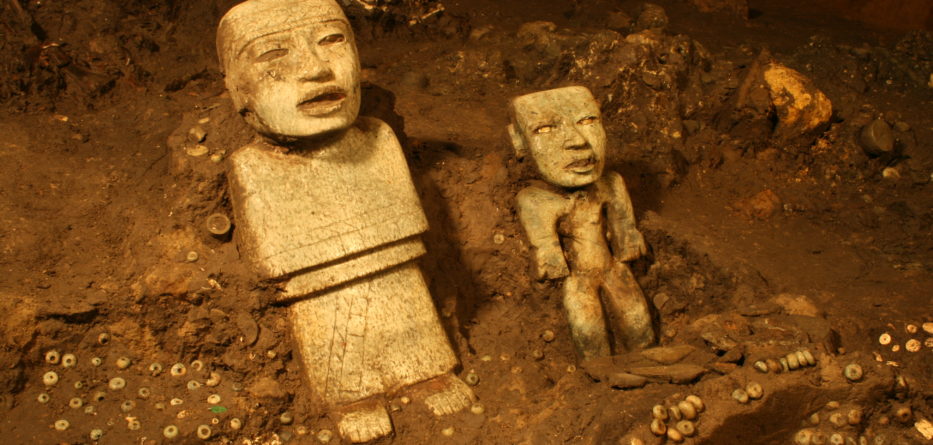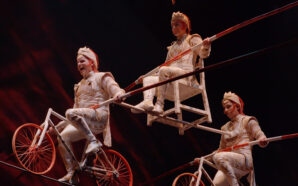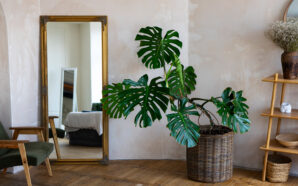The Ancient City of Teotihuacan Arrives to the Bay Area by way of the de Young Museum’s newest collection, “City of Water, City of Fire”
Arturo Hilario
El Observador
The moon, the sun, death, and rebirth. The Teotihuacan people of ancient Mesoamerica sought a life that reflected the nature and process of nature around them, applying their beliefs into their art, politics and their literal sacrifices for a better world, one in consensus with their gods.
Not since 1993 has there been a major exhibit in the United States that focuses on the central Mexico society that was the pinnacle of American civilization in the era of 400 CE, or about 1,600 years ago.
The people of Teotihuacan left behind art, tombs, jewelry, and most obvious, their grand pyramids and structures. They also left behind a lot of questions, such as what language did they speak? How did the city collapse? For all that is known and what has been uncovered of the pre-Hispanic metropolis, researchers have worked hard to fill in the gaps of what day to day life was for the Teotihuacan people.
Since 1993 there have been findings that better highlight what is known and help frame the world of Teotihuacan in relation to our understanding. Now, The de Young Museum of San Francisco will host “Teotihuacan: City of Water, City of Fire”, beginning September 30th, 2017 and run until February 11th, 2018. There, around 250 objects from the findings of the last 24 years, along with existing pieces ended from museums across the Americas will come to the Bay Area to captivate new audiences.
This collection not only gathers pieces from other museums, but also taps into the diverse catalog housed by the Mexican Government and their Instituto Nacional de Antropología e Historia (INAH) in Mexico City, and the artifacts in storage around the Teotihuacan site.
Discovering Teotihuacan
My experience with Teotihuacan and the de Young’s new exhibit began at the site itself, located about an hour’s bus ride away from the current urban pinnacle of Mexico City.
The plane ride in in early August of this year brought back a lot of memories from my childhood trips from California to the region, as my family live nearby in Cuernavaca.
The purpose of our trip was to experience first-hand what it took and what it still takes, to cultivate the knowledge of what the “Teotihuacanos” left behind. We were lucky enough to be accompanied from staff from the de Young, including Matthew H. Robb, who worked at de Young and on this collaboration for years, and now works at the Fowler Museum in Los Angeles as chief curator. Of course, it took many countries, scholars, historians and archaeologist, many hands, to create this, but Matthew ‘sailed the ship’ from Teotihuacan to San Francisco in my eyes.
It being my first time at the site meant my brain had to go through some loops at first sight of the immense pyramids. The two enormous pyramids, The Sun Pyramid, the Moon Pyramid, and the smaller but equally as fascinating Feathered Serpent Pyramid, tower amongst the sightlines of the hills and nearby towns which dip down into valleys. Connecting the Sun and Moon Pyramids is the “Avenue of the Dead”, which was the main street in the city.
The area was once a home to 100,000 people, immigrants and varied ethnic makeup, looking for prosperity in the big city of what is referred to as the “Golden Age” of Mesoamerica. Teotihuacan was, as modern cities around the world are today, a center of religion, politics and commerce.
Actually walking through the city, you get a sense of cultural and “historical weight” that I hadn’t experienced before. My attempts to describe it are, an ancient feeling, if anything. My eyes were telling my brain, ‘this is really as old as it is cataloged as’, and then right after, jumped into imagining the colors and the activity that could have taken place hundreds of years ago. Again, having experts with us helped a lot in picturing the past there so it wasn’t just my wild imagination taking the wheel.
The World of Teotihuacan
The structures of the city are in different states of preservation and it’s very impressive to see splashes of color and artwork still present on walls. As we toured the complex we came across various smaller buildings that line the Avenue of the Dead.
The layout of the city center represented the cosmic worldview of the people there. There was the Sun Pyramid, the Moon pyramid, as well as an underworld. They essentially believed the Sun would rise through the Feathered Serpent Pyramid, float across the world during the day, and plummet into the depths of the underworld at night. According to Julie Gazzola, one of the researchers at INAH, “their spatial components were linked to complex symbolism expressed in the totality of the urban context, forming a cosmogram, a material reproduction of their conception of the universe.”
I thought about how we layout our urban centers today, and it’s similar in the sense that there’s the town squares, or downtowns, and although religion isn’t the main focus (at least in the Bay Area) there are dedicated places for gatherings and rituals. Although they are more focused on music or museums now, they exist to some degree as communal sites.
Histories Mysteries
But like much of the archeologists and people who know Teotihuacan back to front will say, there are still many questions, and much work to do.
Even when the trip was over, and now after doing more research, it’s still not known what the original name for the city was. The current name came from the Aztecs, who were located South in the bed of the lake that most recently and unfortunately shook Mexico City.
The city of Teotihuacan is ripe for interpretation, and I believe that hosting such wonderful treasures of our continents past is great for local communities and those visiting to discover, or rediscover. There lies in Teotihuacan’s history a lot to learn and admire.
Finally, one last interesting note: only 8% of the 20km (12.4 square mile) Teotihuacan site has been unearthed and cataloged.
Now all this is a lot to consume all at once, so it’s great to know that I can return and reflect on that trip at de Young in the coming months. Although the pyramids and the breeze atop the Sun Pyramid won’t be there, at least the cultural artifacts will be.
The opening day celebration of de Young’s exhibit will take place on Saturday September 30th, featuring Ballet Folklorico de San Francisco, clay pyramid building, guest lectures (including one with Gazzola), and family art-making. More information can be found at deyoung.famsf.org and facebook.com/pg/deYoungMuseum/events/.






